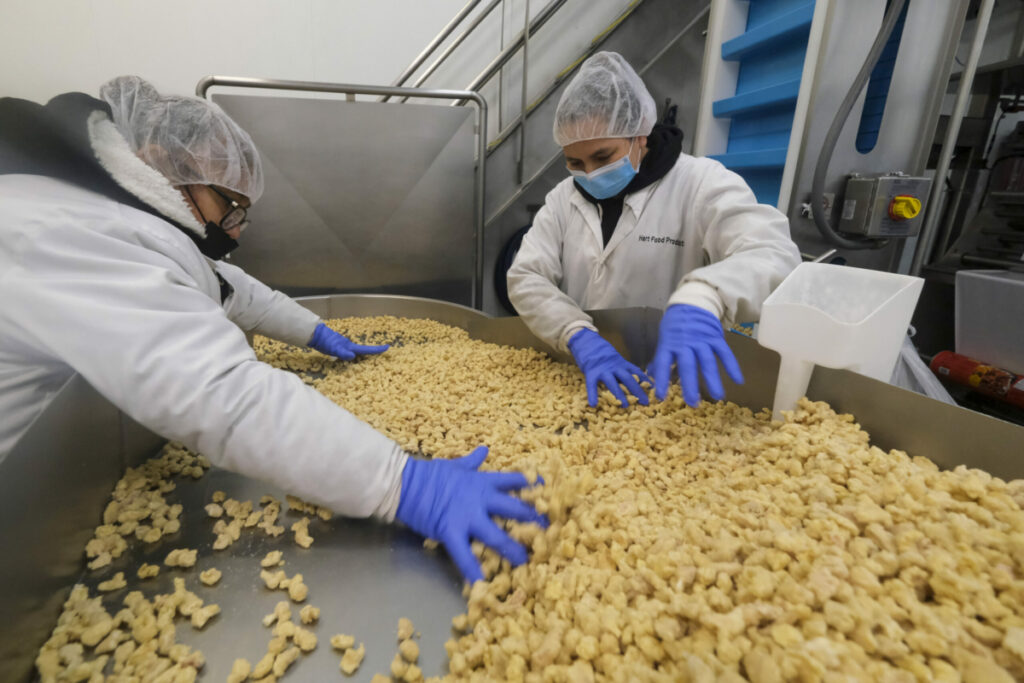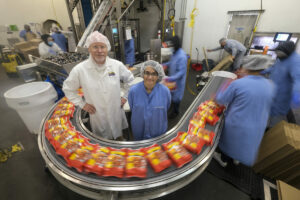Lenders are starting to see the first significant drop in demand for Small Business Administration loans from post-pandemic highs, though the volume remains well above pre-pandemic lows.
According to the Small Business Administration, there were $25.7 billion worth of 7(a) loans nationwide this year, down from $36.5 billion last year.

Jacky Dilfer told the Business Journal that from June 2020 on through the early quarters of this year, her nonprofit lending group, the downtown-based Business Finance Capital, saw its biggest boom in SBA lending demand in recent history. (See page 23 for The Lists of top SBA lenders in Los Angeles.)
Local businesses in particular flourished thanks to L.A.’s hub-city status.
“Because the area is so heavy with warehousing and transportation and distribution, these are the industries that are our primary focus,” Dilfer, the chief executive of Business Finance Capital, said. “Los Angeles is one of the largest ports in the world, and the demand for goods and the means to deliver them has only increased since Covid. We happen to be in a great niche of the market.”
But that momentum showed its first signs of tapering in the early parts of this year, and “while sentiment is still overall positive in the long term,” Dilfer said, the pullback has only become more pronounced as the year nears its end.
“I think it’s been a bit stagnant,” she said. Even though deals are closing, “everything is taking a bit longer,” she said.
One issue is interest rates. “A year ago, the rates were around 2.5% to 3%; nowadays they’re at around 6.5%. However, over the course of the last 10 years, that’s not actually that big of an increase.”
Other lenders
Jennifer Davis, senior vice president in charge of Southern California operations at the Oakland-based TMC Financing, saw a similar progression, placing the start of the decline about the time the Federal Reserve Board began raising rates in the spring. Business owners with fresh memories of the last financial crisis are understandably guarded at signals of uncertainty, Davis said.

“Even then, there was a point where things were still going up from a volume perspective. But that volume started trickling off as the interest rate has been increased. I’d say it dropped off around 50% (from its peak) over the summer, when we started really feeling it,” she said.
“I will say, anecdotally, that I’m not seeing a lot of debt. So I don’t think we’re experiencing the leverage problems we might have seen in the past.”
Like most lenders interviewed for this story, Davis acknowledged the preponderance of economic triggers – such as interest rate hikes and a decline in economic growth – that strongly signal a coming recession. Her colleague Barbara Morrison, TMC’s founder, took it a step further by suggesting the slump has already arrived, if unofficially.
“One thing economists are loath to say is that we’re very likely in a recession now, and what they’re hanging their hats on is the employment rate. Everything else points to it, (and) whether or not it’s a recession by now is just a technicality for the economists,” said Morrison.
“(SBA loan) volume tends to be the canary in the coal mine. We historically have seen the downturn before it has become obvious in the rest of the economy.”
Refinancing now
Whether the recession’s here or on the horizon, Davis said the current market is providing an incentive for SBA 7(a) loan holders, the general assistance loan program most commonly utilized by small businesses, to refinance into a fixed rate.
Applicants have increasingly seen value in SBA 504 program loans. Davis said 504 loans are a viable fixed-interest financing option for businesses looking to purchase commercial real estate they’re looking to expand into or even already renting, and money can be put toward equipment and construction costs.
Importantly, they’re an appealing option for business owners already holding SBA loans, Davis said, as 7(a) loans are capped at $5 million.
The program allowed Bill and Leila Hall – owners and operators of the Paramount-based Hart Food Products Inc. – to secure new financing through TMC. Bill Hall said the loan is allowing the company, a producer of low-cost frozen foods, to move forward on expansion plans.
We happen to be in a great niche of the market.
Jacky Dilfer
Business Finance Capital
“The current lending environment is fantastic,” said Bill Hall, noting that his company had previously taken advantage of 504 loans, in the wake of the 2008 financial crisis. “We are already looking at securing a fourth SBA 504 loan to expand to another location. The interest rates are better, the down payment is lower, and it is a better experience through and through.”
Peter Drake, a senior SBA business development officer at Bank of America, said in an email that many Los Angeles business clients have been especially interested in SBA 504s and buying commercial real estate this year, prompting the bank to roll out a program oriented toward women- and minority-owned businesses seeking to purchase commercial real estate through SBA loans.

“(I)t’s exciting to see that 2022 has been one of the strongest years yet in terms of new loan originations in the Southland. Bank of America had already surpassed our 2021 SBA lending totals for Los Angeles by early October of this year, and we see a strong close to the year for SBA production,” he said. “L.A. remains a dynamic market with diverse entrepreneurs who are hungry to get established here due to the large population and spending power here.”
Catherine Jooyan, senior vice president and SBA regional manager for California at U.S. Bank, said economic factors such as rising interest rates are proving to be the biggest hurdle for small businesses that are weighing the risk-reward ratio of additional debt, rather than the economic factors themselves.
“Rising rates have impacted the ability of some customers to qualify for SBA loans and caused some businesses to hit pause,” said Jooyan. “But with that said, we are still lending and have a healthy lending pipeline as we work with businesses every day to help them fulfill their dreams.”
“I do think there’s going to be more deterioration over the course of the next few months,” according to Nicole Auyang, the head of SBA lending at City National Bank. “We do expect some overall deterioration in the financial performance (of small businesses) and all of that.”
But thanks to the experience lenders got during the pandemic, she said, they’re in good position to handle borrowers’ needs.
